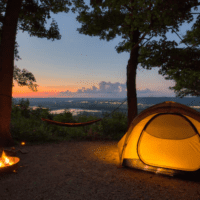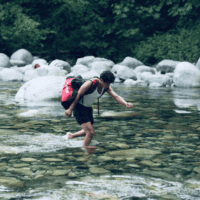NZ bush is very unique, as much of it was formed in isolation from the rest of the world. When Europeans first arrived in NZ they found the bush hard to travel and navigate through and often it was compared to tropical vegetation. Although NZ is a small country the tracks in some areas can be narrow and hard to navigate, NZ has developed the below bush code to help make hikers safer in the bush.
The Outdoor Safety Code
The Outdoor Safety Code provides an easy five step guide of the most important things you should do before, and during, any land-based recreation. This includes hiking, day walking, hunting, and the numerous activities people enjoy in our outdoor spaces.
1. Choose the right trip for you
Learn about the route and make sure you have the skills for it.
It’s important to choose a trip that suits you and everyone in your group.
When you are looking at the options, make sure you think about everyone’s fitness levels and experience in the outdoors.
Some questions to consider are:
- How long will it take to complete your trip? Will you be able to finish it during daylight? Remember to add extra time for travel, lunch and rest stops.
- How hard is the trip? Will everyone in the group be able to do it?
- Do you know which way to go? Will it be easy to follow the track and not get lost? Packing a map and track description will help.
- What is the landscape like? Are there any dangerous parts or difficult sections?
- If the weather is bad, can you still do the trip? What would you need to do differently?
- Will you need to cross a river? Make sure you’ll be able to do that safely. You should also be able to recognise when a river is unsafe to cross.
- How will you get to the trip? Many tracks start and finish in different places – plan how to get back to your car.
- What clothing and gear do you need? Does everyone in the group have it?
2. Understand the weather
It can change fast. Check the forecast and change your plans if needed.
Weather can make or break a trip. It’s one of the most important things to consider when going into the outdoors.
No matter what the weather is, it will impact your trip. Bad weather (such as strong wind, rain and cold temperatures) can be very dangerous. The weather changes fast in New Zealand and you should be prepared for any weather. It can be sunny, rainy and windy all in one day.
Before any trip, check the weather using New Zealand’s public weather forecasting service, metservice.com. If there is bad weather forecasted, think carefully about whether your trip will be safe and consider changing or cancelling your plans. Pay careful attention to weather watches or warnings in the area you’re planning on visiting.
3. Pack warm clothes & extra food
Prepare for bad weather and an unexpected night out.
Any trip, even if it is short or easy, needs preparation. Packing the right things makes trips safer and more enjoyable.
If you are going on a short trip, always pack:
- A waterproof jacket
- Warm clothes
- A warm hat
- Gloves
- A torch
- A sun hat
- Sunscreen
- Some extra food and water
- A communications device (e.g. cellphone)
For a longer trip (e.g. an overnight trip or a long day walk), pack:
- Everything on the short trips list above
- An extra day’s worth of food and water
- A first aid kit
- An emergency shelter (e.g. tent, bivvy bag or a large pack liner)
- An emergency communications device (e.g. a distress beacon)
These things will help keep you safe if the weather turns bad, you have an accident, get lost or are delayed. Some outdoor equipment stores will hire clothing and equipment if you don’t have your own.
4. Share your plans & take ways to get help
Telling a trusted person your trip details and taking a distress beacon can save your life.
We all want our trips to go as planned – but sometimes they don’t. If you got hurt or lost on your trip, how would you get help?
Any time you are going into the outdoors you should:
- Share your plans with someone you trust. Tell them where you are going and when you will be back. If they don’t hear from you by an agreed time, they should call 111 and ask for the police. There are lots of ways to share your plans. You can write down the information on paper for your trusted person, email them, text them, or use an outdoor intentions form.
- Think about how you would call for help if you needed to. Cellphone reception can be patchy or non-existent outside towns and cities, so consider taking a distress beacon (see more below).
- If you visit a Department of Conservation hut (even if you aren’t staying the night), fill in the Intentions Book.
Distress beacons can be used in emergencies to alert rescuers of your location and that you need help. Unlike cellphones, they work everywhere. You can rent distress beacons throughout New Zealand (e.g. outdoor equipment stores). If you own one, make sure it’s registered – it gives rescuers important details when providing help.
Find out more about Search & Rescue
5. Take care of yourself & each other.
5. Take care of yourself & each other.
Eat, drink and rest, stick with your group and make decisions together.
The best way to enjoy your experience in the outdoors and make it home safely is to look out for one another.
Stop regularly to eat, drink and rest.
Discuss how everyone is feeling. If someone is struggling, don’t keep going – have a break and consider changing plans.
Make decisions together. It’s important that all group members agree to changes in the planned route or transport arrangements.
Groups splitting up is a common cause of search and rescue callouts. If someone in the group is slower, put them at the front or make sure you are walking at a pace that suits them. You should also stop and wait at every track junction/bridge to ensure you’re still all together. Don’t just walk on ahead and leave them to meet you at the end of the trip.










